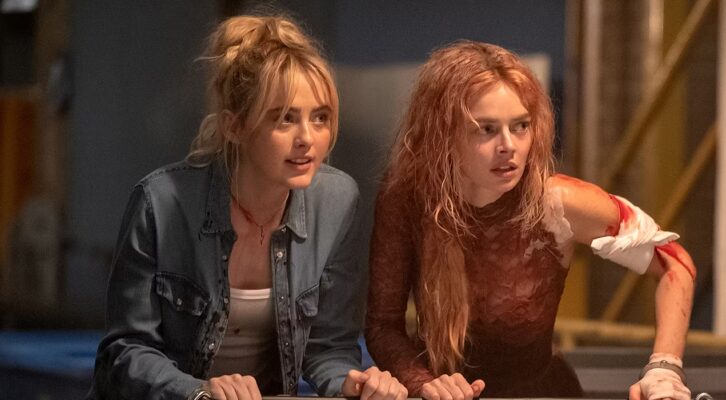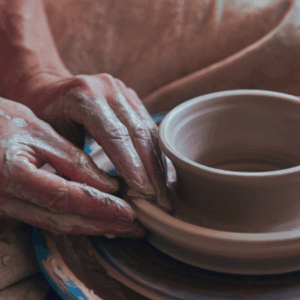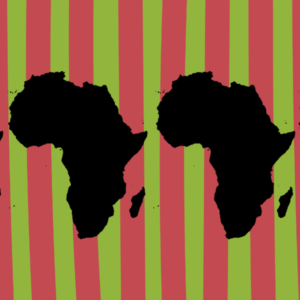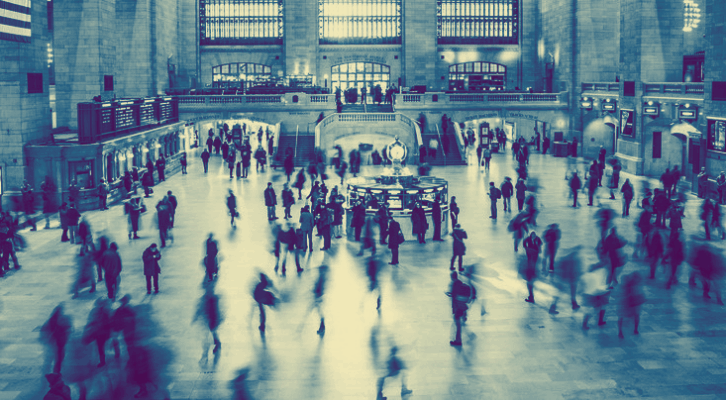
Taking Up Space: Relationships as Sites of Social Transformation
Prentis Hemphill Encourages Us to Reevaluate Our Conceptions of Embodiment, Space and Human Connection
“You see that line on the ground? Follow it to the end and make everybody move around you.” These were the instructions of my sister’s best friend in high school. Her name was Carole, and she’d come to live with us because she was white and pregnant with the child of her Black boyfriend. That combination of offenses caused her parents to kick her out and us to take her in. We were at the mall, and she had noticed my meandering path through the crowds. I was bumped and smashed trying to make my way back to my family, and my ten-year-old body had started to brace and cower through the aisles.
“I’ve noticed,” she said, “that if I don’t back down, men will eventually move out of my way, so they don’t crash into me. They just expect that I’m going to move, and I don’t. Try it.”
I had doubts. Carole was older, taller, whiter than me, but on her encouragement, I set a path through Dillard’s to experiment. What I noticed first was how surprised people were, how they would jump at the last minute and look down, perplexed, at this unrelenting Black child. I focused on the line, on where I was going, my body staying filled out even when I could feel the heat of the person coming closer. I didn’t seek collision, but I didn’t avoid it either. Only once did I crash into a couple who did not or could not see me. It was startling to us both, but their confused “Oh, I’m sorry!” was an unexpected reward. I was suddenly affirmed as someone whose body existed and mattered. And their confusion was the upending of a silent agreement.
History was never the story of great men alone, as our textbooks would have us believe. It was always the story of relationships.
Mine had been the kind of body that made way, that yielded, politely invisible, that apologized for not contorting quickly enough. Theirs were the kinds of bodies that moved unencumbered toward the sale rack. Now both they and I were unsure of who we were to one another, and that gave me more room somehow to breathe. Each time I tried it, I’d come back sheepishly smiling, amazed at how it worked and how I felt about myself on the other side. Carole nodded. “See,” she’d said. “They know you’re there. Don’t give up your space.”
It was one of my first lessons on presence and focus. That a sense of embodied conviction and self-possession was an unspoken communication and could move people from my path. It was also a lesson in social contracts, in how choreographed our relationships are to one another, what we come to expect from the bodies around us, whose body gets to remain intact in this world, and whose must bend. It’s hard to appreciate to what degree history shapes our relationships to one another. It’s hard to notice how it can invade each moment through the habits and conditioning we’ve come to embody. How it can contour who we care for and our ability to really see one another.
History was never the story of great men alone, as our textbooks would have us believe. It was always the story of relationships. Theirs and ours. Of how we related to the world around us and how we related to one another. The stories we told about who our people were in relationship to God and to the land. The stories of encounter with the unknown other. The ways we enshrined these stories and our identities in our culture and practice and in our bodies. The origins may feel distant to us now, but we inherit beliefs and patterns of relationship by watching how the people around us move. Who is listened to and seen, who is adored. Who is invisible. Who is lifted up. Who is hunted down. We learn in this way who we are, and who we have been, in relationship to the world’s other inhabitants.
When I remember my ancestors, for whom disagreement or self-defense was enough reason for violence to come down on their bodies, I think about their wherewithal to teach emotional survival strategies to the generations that followed, to have them perceive danger first and mask their genuine responses in certain company. I imagine the white people who codified their own emotional comfort, if not in laws, then in cultural norms, and, either explicitly or implicitly, accepted the violence done on their behalf. I think about how that emotional entitlement was passed on to the following generations by example and instruction. It’s some of what I felt navigating through the crowd at the mall. And I think about all of that when I drive up to the gas pump ahead of a car I didn’t see coming in, and the driver slips the word “nigger” out the window in disgust as she drives by. There is history in her behavior, the same as there is history in my anger and my silencing of it.
This social contract, this order, makes sense by being so ubiquitous. Yet it still can be changed. If we are unaware that we inherit these relational models, we end up re-creating some version, some derivative of the relational dynamics we have witnessed. It is easy for each of us to replicate what is embodied around us, historical impositions of another time mapped in our bodies, telling us who and where we are. And yet, though it’s hard, it is possible to live with the lessons of the past, to face history without becoming its instrument.
When we look to the nature of our relationships with one another, we can become more skillful and authentic in our interactions, and see that there are ways of relating that might allow us to connect and come out of the automatic past and entrenched ways of being so that we can meet one another now. Not bypassing our history but moving forward in its knowledge. Our ability to do this is key—our relationships, our social connections, are the bridge between individual and societal transformation.
Our relationships can be freed some from the expectations imposed by history and oppression when they are given more room, prioritized, and centered. When as Black people, or as women, or men, or Brown people, or whoever we might be, we allow ourselves to feel honestly, authentically, and to be open to meeting one another in relationship. Relationship is not some transcendent space. It is the trenches. It is risky and implicating to fully connect with someone. We don’t bypass history and what we’ve inherited from it, but instead we hold it and all the ways it’s taught us to find safety in distance, or to believe in superiority and inferiority myths. We hold those stories up next to what we really feel, where our bodies pull toward and where they recoil. We investigate if our impulses are the result of our conditioning or are a deeper truth. We make mistakes and recover.
But running from our history, ignoring it, flattening it, denying what we feel when we are close, does nothing to have us really meet one another. It’s like trying to hold the ocean at a distance. It just makes us dishonest and more isolated from ourselves, from one another. But by making use of the knowledge of our history, using our power and position to make it safer for real things to be shared between us, we surrender to what is ultimately uncontrollable and filled with endless possibility, the terrain of relationship.
Our relationships can be powerful places of transformation. It only takes moving out from underneath what is expected and into what is real.
Living with history is as much a spiritual practice as an embodied one, a practice really of inviting the past to tell us how it has shaped us, what gifts it has offered us, and what limitations it has imposed on us. What does our training allow us to do, and what does it prohibit? Who does it tell us we need to be most of the time, and for whom? Who does it tell us others need to be for the world to make sense? Are we willing to know it to that degree, and are we willing to lay the scripts down for something else? For authentic encounters, in all their unpredictability. For the bumps and challenges of real-time relationship in which we get to find out who we are and enter into the realm of living beings who find growth, transformation, and connection to be their primary tasks.
When we are able to live with our history, there’s a possibility in relationship to dissolve the isolation that defensiveness has moved us toward and to experience the wonder of intimacy, understanding, and being truly seen. There’s the possibility that we might find that when our relationships are nimble and honest, and we are emotionally sturdy enough to be in them, we can build much bigger things than we could have alone, that we can withstand more pressure together. Such relationships can transform us—and they are the key to transforming society.
The kid I was at the mall that day, crouching through the aisles, didn’t have the language to describe what I suddenly understood when my presence parted traffic. I saw then that most of the time we act out scripts that have been offered to us. We play our roles in the show. I got a glimpse that day that there was something more to who I was, and who I and others could be with one another. Our relationships can be full of everything life is. Our relationships can be powerful places of transformation. It only takes moving out from underneath what is expected and into what is real.
__________________________________
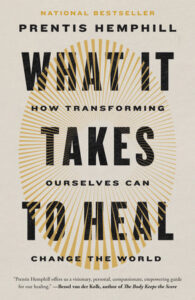
Adapted from the book What It Takes to Heal: How Transforming Ourselves Can Change the World by Prentis Hemphill. Copyright © 2024 by Prentis Hemphill. Published by Random House, an imprint and division of Penguin Random House LLC. All rights reserved.
Prentis Hemphill
Prentis Hemphill is a writer, embodiment facilitator, political organizer, and therapist. They are the founder and director of the Embodiment Institute and the Black Embodiment Initiative, and the host of the acclaimed podcast Finding Our Way. Their work and writing have appeared in The New York Times, HuffPost, You Are Your Best Thing (edited by Tarana Burke and Brené Brown), and Holding Change (by adrienne maree brown).











